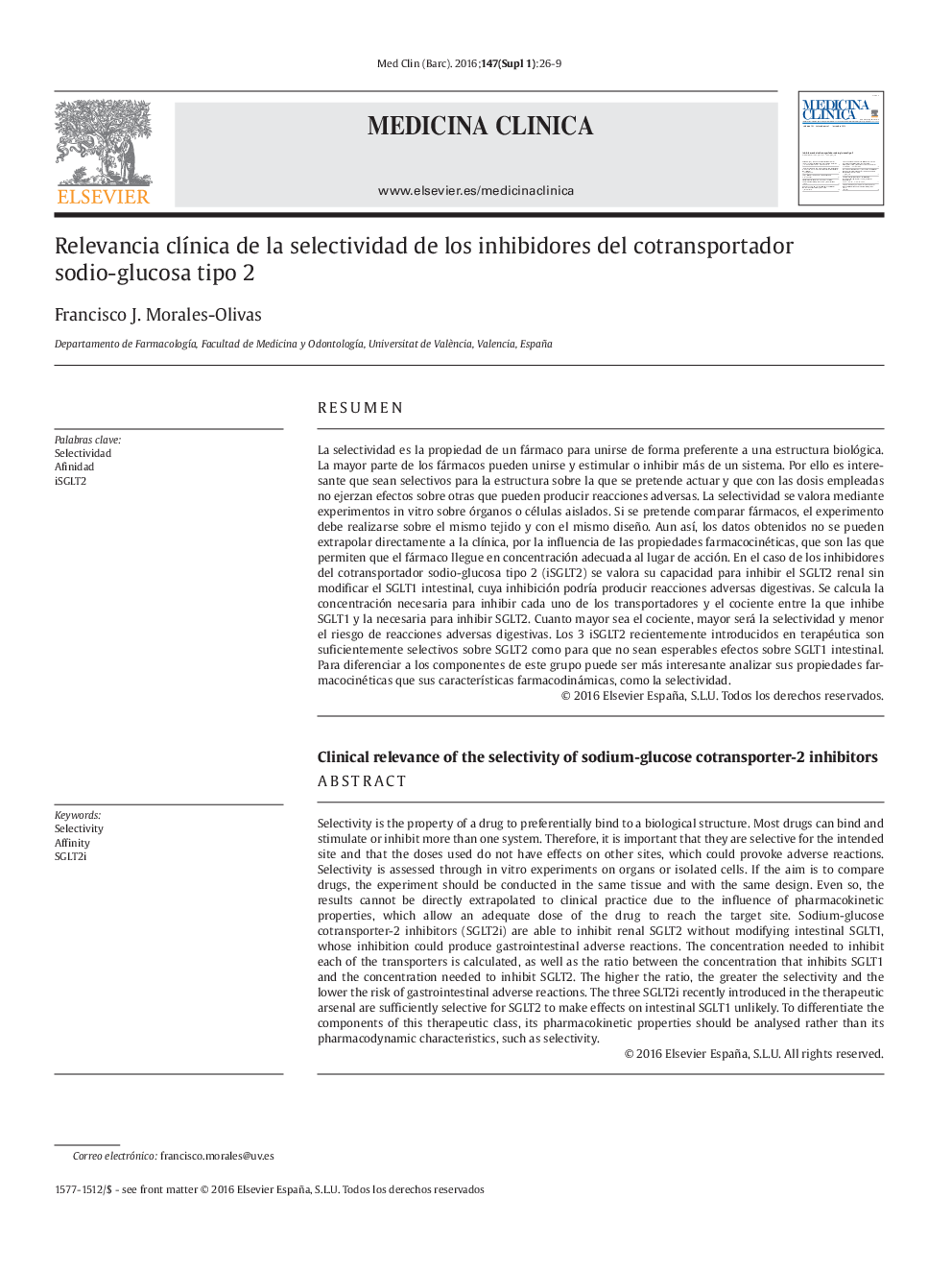| کد مقاله | کد نشریه | سال انتشار | مقاله انگلیسی | نسخه تمام متن |
|---|---|---|---|---|
| 5680954 | 1408798 | 2016 | 4 صفحه PDF | دانلود رایگان |
عنوان انگلیسی مقاله ISI
Relevancia clÃnica de la selectividad de los inhibidores del cotransportador sodio-glucosa tipo 2
ترجمه فارسی عنوان
ارتباطات بالینی انتخابی بازدارنده نوع 2 گلوکز سدیم گلوکز
دانلود مقاله + سفارش ترجمه
دانلود مقاله ISI انگلیسی
رایگان برای ایرانیان
کلمات کلیدی
موضوعات مرتبط
علوم پزشکی و سلامت
پزشکی و دندانپزشکی
پزشکی و دندانپزشکی (عمومی)
چکیده انگلیسی
Selectivity is the property of a drug to preferentially bind to a biological structure. Most drugs can bind and stimulate or inhibit more than one system. Therefore, it is important that they are selective for the intended site and that the doses used do not have effects on other sites, which could provoke adverse reactions. Selectivity is assessed through in vitro experiments on organs or isolated cells. If the aim is to compare drugs, the experiment should be conducted in the same tissue and with the same design. Even so, the results cannot be directly extrapolated to clinical practice due to the influence of pharmacokinetic properties, which allow an adequate dose of the drug to reach the target site. Sodium-glucose cotransporter-2 inhibitors (SGLT2i) are able to inhibit renal SGLT2 without modifying intestinal SGLT1, whose inhibition could produce gastrointestinal adverse reactions. The concentration needed to inhibit each of the transporters is calculated, as well as the ratio between the concentration that inhibits SGLT1 and the concentration needed to inhibit SGLT2. The higher the ratio, the greater the selectivity and the lower the risk of gastrointestinal adverse reactions. The three SGLT2i recently introduced in the therapeutic arsenal are sufficiently selective for SGLT2 to make effects on intestinal SGLT1 unlikely. To differentiate the components of this therapeutic class, its pharmacokinetic properties should be analysed rather than its pharmacodynamic characteristics, such as selectivity.
ناشر
Database: Elsevier - ScienceDirect (ساینس دایرکت)
Journal: Medicina ClÃnica - Volume 147, Supplement 1, November 2016, Pages 26-29
Journal: Medicina ClÃnica - Volume 147, Supplement 1, November 2016, Pages 26-29
نویسندگان
Francisco J. Morales-Olivas,
